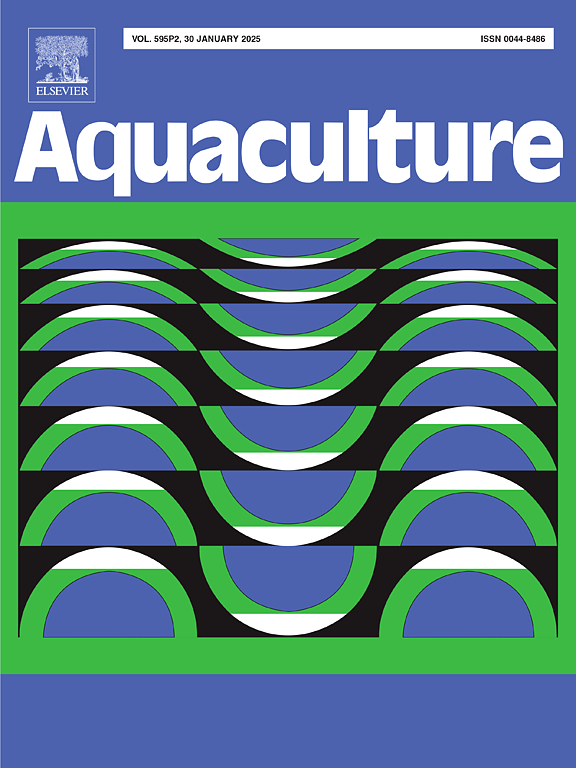NOX1-ROS轴调控MAPK信号通路,激活caspase-1抵抗鱼毒爱德华菌感染
IF 3.9
1区 农林科学
Q1 FISHERIES
引用次数: 0
摘要
烟酰胺腺嘌呤二核苷酸磷酸氧化酶(Nicotinamide adenine dinucleotide phosphate, NADPH)氧化酶是活性氧(reactive oxygen species, ROS)的主要产生酶,在免疫应答、细胞增殖或信号转导过程中起着重要作用。ROS的复杂功能使NADPH氧化酶在宿主防御机制中具有多方面的作用。然而,在细菌感染过程中,鱼类NADPH氧化酶的具体功能和潜在机制仍然难以捉摸。本研究以斑马鱼为模型生物,探讨NOX1的抗菌作用及其机制。免疫荧光和亚细胞分离分析表明,斑马鱼NOX1主要定位于细胞质中。此外,在感染鱼腥味爱德华菌后,NOX1的表达显著上调。功能分析显示,斑马鱼NOX1保留了促进ROS生成的保守能力。这反过来又通过活性氧的杀菌活性抑制了piscicida的生长。因此,斑马鱼和培养细胞的存活率提高,并伴有抗菌基因的上调。机制研究进一步表明,斑马鱼NOX1通过促进MAPK信号通路中关键基因的表达来发挥其抗菌作用。同时,斑马鱼NOX1通过ROS激活caspase-1,引起炎症细胞因子的诱导。此外,NOX1-ROS轴增强了趋化因子的转录上调,包括单核细胞趋化蛋白-1 (mcp-1)和C-X-C基序趋化因子配体8 (cxcl8),这些趋化因子加速了中性粒细胞的迁移,从而能够快速响应细菌感染。综上所述,本研究全面阐明了NOX1在硬骨鱼细菌感染中的作用和机制。这些结果为鱼类免疫的认识提供了新的线索,并为鱼类疾病的预防和控制提供了潜在的策略。本文章由计算机程序翻译,如有差异,请以英文原文为准。
NOX1-ROS axis regulates the MAPK signaling pathway and activates caspase-1 to resist Edwardsiella piscicida infection
Nicotinamide adenine dinucleotide phosphate (NADPH) oxidase serves as a primary generator of reactive oxygen species (ROS) and assumes a critical role in immune responses, cell proliferation or signal transduction processes. The intricate functionality of ROS endows NADPH oxidase with multifaceted roles in host defense mechanisms. However, the specific functions and underlying mechanisms of fish NADPH oxidase during bacterial infections remain largely elusive. In this research, zebrafish were employed as a model organism to investigate the antibacterial function and mechanism of NOX1. Immunofluorescence and subcellular fractionation analyses demonstrated that zebrafish NOX1 was predominantly localized in the cytoplasm. Moreover, upon infection with Edwardsiella piscicida, a significant upregulation of NOX1 expression was observed. Functional assays revealed that zebrafish NOX1 retained the conserved ability to promote ROS generation. This, in turn, suppressed the growth of E. piscicida through the bactericidal activity of ROS. Consequently, the survival rates of zebrafish and cultured cells were enhanced, accompanied by the upregulation of antibacterial genes. Mechanistic investigations further demonstrated that zebrafish NOX1 exerted its antibacterial effects by promoting the expression of critical genes within the MAPK signaling pathway. Simultaneously, zebrafish NOX1 activated caspase-1 via ROS, causing the induction of inflammatory cytokines. Additionally, the NOX1-ROS axis enhanced the transcriptional upregulation of chemokines, including monocyte chemoattractant protein-1 (mcp-1) and C-X-C motif chemokine ligand 8 (cxcl8), which accelerated neutrophil migration, thereby enabling a rapid response to bacterial infection. In summary, this study comprehensively elucidated the function and mechanism of NOX1 during bacterial infection in teleost. These results shed new light on the understanding of fish immunity and offer potential strategies for the prevention and control of fish diseases.
求助全文
通过发布文献求助,成功后即可免费获取论文全文。
去求助
来源期刊

Aquaculture
农林科学-海洋与淡水生物学
CiteScore
8.60
自引率
17.80%
发文量
1246
审稿时长
56 days
期刊介绍:
Aquaculture is an international journal for the exploration, improvement and management of all freshwater and marine food resources. It publishes novel and innovative research of world-wide interest on farming of aquatic organisms, which includes finfish, mollusks, crustaceans and aquatic plants for human consumption. Research on ornamentals is not a focus of the Journal. Aquaculture only publishes papers with a clear relevance to improving aquaculture practices or a potential application.
 求助内容:
求助内容: 应助结果提醒方式:
应助结果提醒方式:


